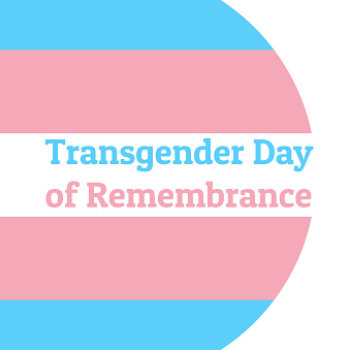Honoring Transgender Remembrance Day - Friday November 20, 2020

The world is a dangerous place for transgender people. Transgender Remembrance Day honors victims of transphobic violence. Murder is the extreme form of oppression experienced.
Correct Pronouns, Names, and Honoring Stories
- Ari Pehkonen, LCSW (he/him).
Transgender Day of Remembrance, a day that honors victims of transphobic violence, can be a scary reminder to many transgender people of how dangerous the world is to them. Murder is certainly the most extreme form of oppression faced by transgender and gender non-conforming individuals. More common experiences of danger are intrusive questions, invalidating comments, refusals to recognize gender variation, as well as outright harassment and bullying.
In my work as a therapist, I have to contemplate what allows for a feeling of safety for my patients who are transgender. I hear from them that, ironically, hospitals and clinics are some of the most invalidating environments they have had to endure. Their pronouns, their bodies and their experiences don’t seem to belong in healthcare systems where communication and interaction is brisk and sterile.
We, as healthcare workers, sometimes forget the power that we have to create a sense of safety for our marginalized patients. My hope is that on this Transgender Day of Remembrance we take some time to remind ourselves to use our patients’ (and coworkers’) correct pronouns, correct names and to honor their stories and experiences.
Safe, Welcoming and Respectful Spaces Reduce Deadly Risks
- Ana M. Progovac, PhD (she/her) and María José Sánchez Román, MD, MPH (she/her)
In a recent study led by a multidisciplinary team from Cambridge Health Alliance/Harvard Medical School’s Health Equity Research Lab and collaborators, we found that likely-transgender or gender diverse patients at CHA had significantly higher rates of suicide attempts, suicidal ideation, and violence victimization than other patients active in the CHA health system. We also found that experiencing violence victimization was an independent risk factor for suicide attempt or ideation for all patients, but that identified transgender or gender diverse patients still had a large remaining risk for both of these outcomes even after adjusting for their higher exposure to violence. The study is forthcoming in World Medical and Health Policy, an international journal focusing on the intersection of policy, politics, medicine and public health aiming to improve global health.
In many ways, these findings confirm what we already know: there is much work left to be done to ensure safety for transgender and gender diverse people both in and out of the health system. Our study adds additional data to the growing literature demonstrating higher violence victimization and suicidality among transgender and gender diverse populations. Prior studies show that experiences such as marginalization and gender-based and healthcare discrimination are common among transgender and gender diverse people, and that greater adverse social conditions such as financial instability, homelessness, and unemployment also contribute to higher rates of suicidality in this population.
At an institutional level, efforts to systematically record gender identity and social needs like safe housing in medical records could improve medical care and outcomes by redirecting available resources. However, we must pair efforts to record mental health and social needs with a structured approach to helping patients meet those needs. As Ari’s thoughtful words above remind us, the price of failing to create safe, welcoming spaces for our transgender and gender diverse patients and colleagues is far, far too high.
What is CHA Doing?
- Aimee Ricciardone (she/her) and Lexi Ladd, MPH (she/her)
CHA recognizes the need to do more. Through the work of many, efforts and initiatives are evolving to better meet the needs of our transgender and gender diverse patients.
Here are a few accomplishments as well as improvements that are coming in the near future:
- A Transgender Resource page was created to help current patients and new patients connect with people who provide gender affirming care.
- CHA received HRC/HEI Top Performer designation in LGBTQ Healthcare (2020)
- A searchable LGBTQ Health category in our provider directory will be released with our new website in the coming months
- Many departments completed an LGBTQ Health training, including all primary care sites, with more training for the entire system rolling out in the New Year
- SOGI information categories were updated in our patient records, and training on the new forms were completed in specific departments with more training rolling out for all providers in the New Year
- Several Grand Rounds highlighting transgender care took place with more planned
- Several articles relating to transgender health were published by CHA employees over the past two years
- Additional efforts are underway guided by members of the LGBTQ+ Healthcare Equity Committee and the DEI Council.
We welcome your involvement in making CHA a better healthcare system. If you’re a CHA patient, please join the Patient and Family Advisory Council and add your voice to the improvement effort.
Contributors:
Ari Pehkonen, LCSW (he/him)
Clinical Social Worker
Cambridge Health Alliance
Ana M. Progovac, PhD (she/her)
Health Equity Research Lab
Instructor, Dept of Psychiatry, Harvard Medical School
Senior Scientist, Dept of Psychiatry, Cambridge Health Alliance
María José Sánchez Román, MD MPH (she/her)
Research Assistant, Johns Hopkins University
Collaborator, Health Equity Research Lab, Cambridge Health Alliance
Lexi Ladd, MPH (she/her)
Planning and Marketing Manager
Coordinator, CHA LGBTQ+ Health Equity Committee
Aimee Ricciardone (she/her)
Executive Assistant, CHA Human Resources
Member, CHA DEI Council and LGBTQ+ Health Equity Committee
Disclaimer
This articles provide general information for educational purposes only. The information provided in this article, or through linkages to other sites, is not a substitute for medical or professional care, and you should not use the information in place of a visit, call consultation or the advice of your physician or other healthcare provider.